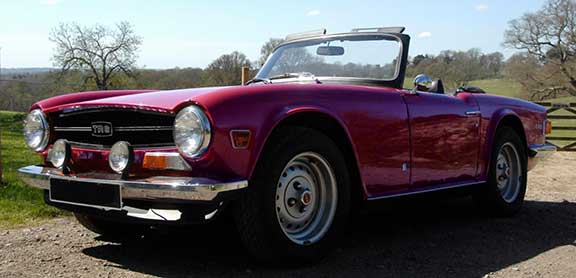I'll tell you my story so you can understand what making art means to me.…
Born into Repurposing and Recycling
The nature of rubber wearing away versus the steel-belted radials giving up and snapping are two events that happen around the same time when a tire explodes on the road. How much force does it take to break 1/2 inch thick rubber held together with steel wire? This is the kind of question that someone like my father, a metallurgic & electrical engineer would have been able to answer. He was a master of repurposing & recycling things at home and in his laboratory at work.
When I was a child, my father would bring home various plastic and metal materials for my brother and me to check out. Sometimes they would turn into games, such as the first time we saw bubble wrap that turned into a fantastic jumping game that created fabulous cracking and popping noises. We always found alternate uses for the scraps from the lab.
Later, as an artist in high school and college, my father would bring home interesting materials that were destined for the trash and offer them up as possible objects to be used in my art projects. He had seen my arrangement of dried flowers sitting in vertically stacked rusted mufflers and my rusted ironing board that hung on the wall like a masterpiece and knew I would figure out what to do with things like leftover circuit boards and small welding experiments. Even though he was afraid I’d turn out like his most disliked artist, Jackson Pollack, he continued to support my artistic explorations by salvaging objects from the refuse heap. This idea of repurposing and looking at the potential of any discarded objects has been a part of my life in many ways for many years.
I’m also in great appreciation of this ancestral lineage of strong women and hardy men who came to this country with very little on their backs but with so much wisdom, creativity, and survival skills. They were the original people who employed the true meaning of repurposing and recycling.
“Necessity is my mother, the mother of invention.”
On the other side of the equation was the “Jaqueline of all trades,” my mother, Constance Joan Nerich Bosna. Even with a house filled with eleven children, one dog, several cats, some fish, and a husband at work all day, my mother survived this crazy scene plus found time to sing and do choreography with a local chorus.
“If there’s a will, there’s a way.”
Connie grew up during the depression and carried the strong characteristics of her Yugoslavian and Irish ancestors: creative, methodical, entertaining, and a strong work ethic. They immigrated to this country with creative energy to a new land offering hope but with a harsh reception. “Make do with what you have” was the challenge of all those who wanted to start a new life. Most of our dinnerware and much of our clothing and furniture came from thrift shops. My mom had a keen eye for well-made items, an interest in where they were made, and a bit of history of how they were constructed. On occasion, my mother would take me with her to go thrift shopping. Sometimes she would pick something up and ask, “Do you know what this is used for?” The answers mainly were serious, but there was room for comedy as well.
Connie’s problem-solving ran the entire gamut from the kitchen to kids needing stitches to fixing household items to sewing clothing and a long list of things she either knew what and how to do, or she improvised and figured it out. Some of that is simply what mothers do, but at a core level, my mom was a creative problem solver and behind that was an unrecognized artist, singer, and choreographer at heart.
I owe so much to all of those who have gone before me. Their creativity and focus are part of the backbone of all my art. I pay homage to them all.
Shelly Burman’s grandfather was told that the streets of America were paved in gold and when he got here he found out:
1. The streets weren’t paved with gold.
2. The streets aren’t even paved.
3. He was the guy paving them.
Shelly Burman, born 1925, American comedian, actor, writer, teacher, lecturer, philanthropist, and poet.
“The most important rule about creating art is to learn how to break the rules.”



